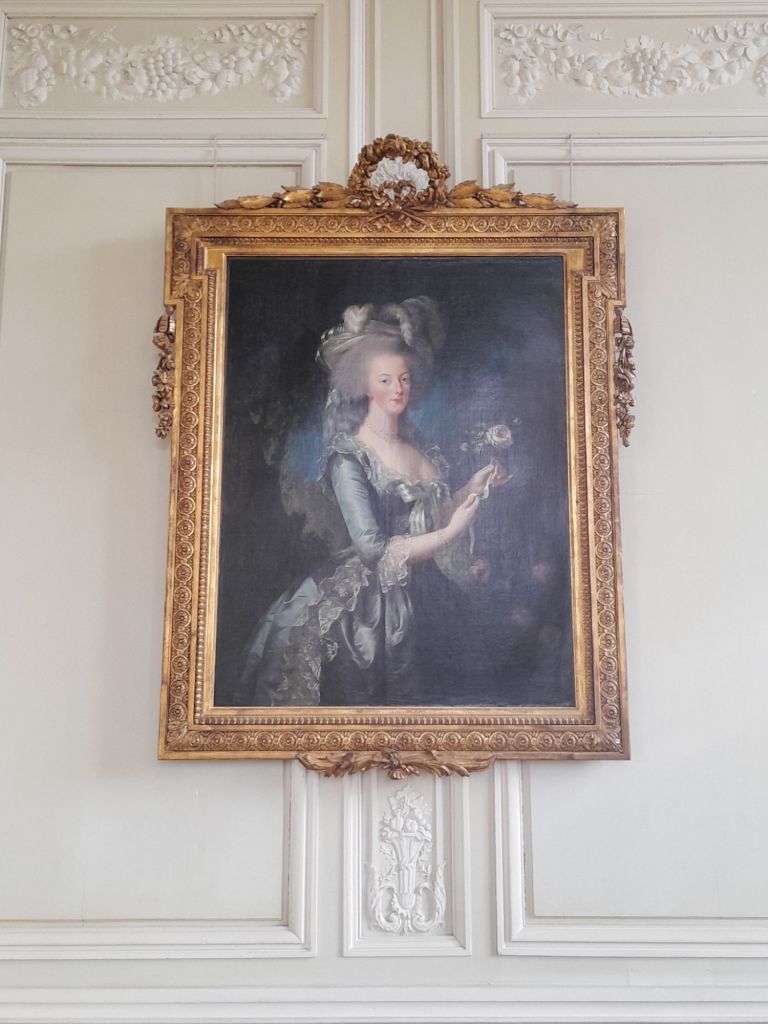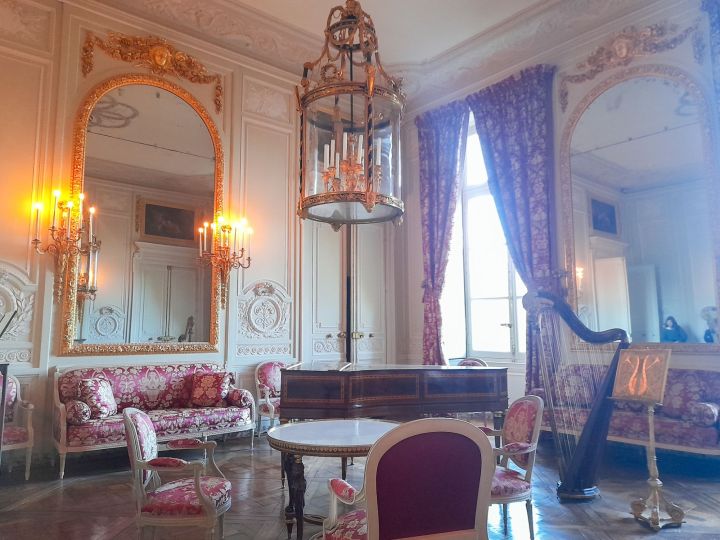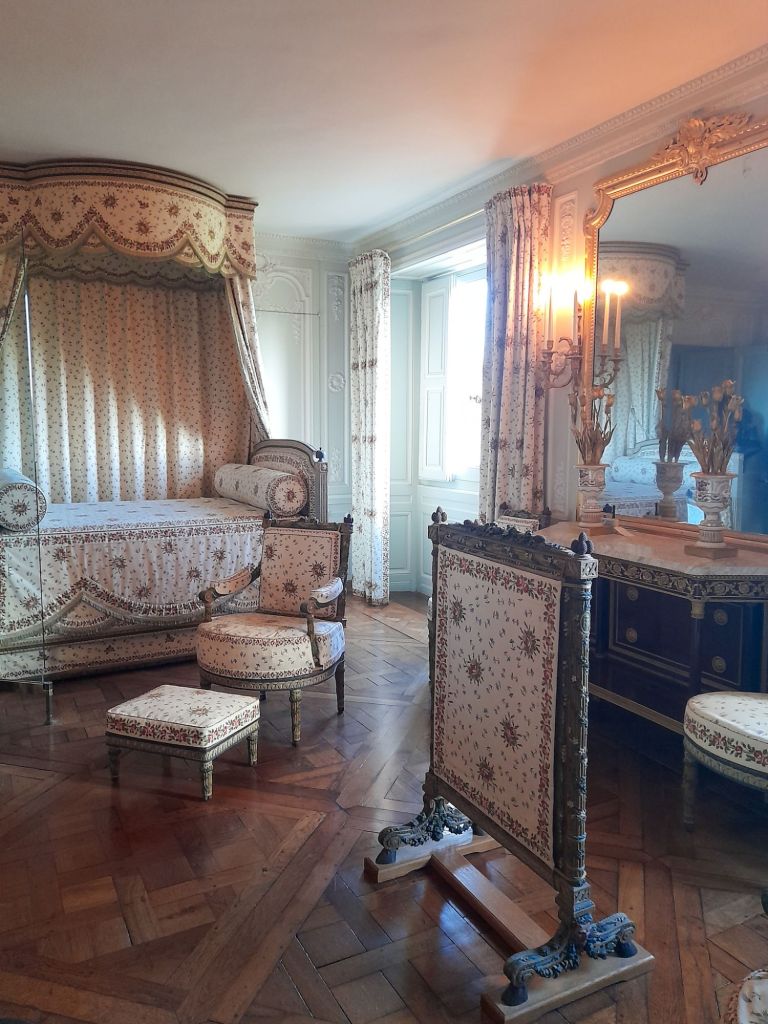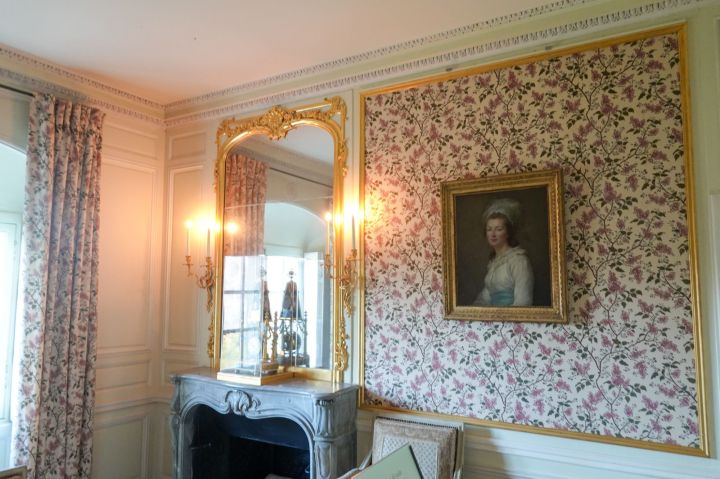During my recent stay at Airelles, Le Grand Contrôle, another out of hours tour I had the privilege of enjoying was of Le Petit Trianon (literally ‘the small villa’).
In 1758, Louis XV decided to build a new palace in the middle of his gardens for his long term mistress Madame de Pompadour, and Le Petit Trianon was completed 10 years later. However, she died before it was completed, and in fact Louis XV himself died in 1774 shortly afterwards.

That meant the new King, Louis XVI came in to power and he gifted Le Petit Trianon to his wife, Marie-Antoinette. She quickly made it her own and ordered an extensive redesign of the external areas, and continuously developed the house inside to put her stamp on it.
The house is split in to three floors. Entering the house on to the ground floor via the Honour Courtyard, visitors are greeted with a sweeping atrium housing the honour staircase. Whilst much more understated than the opulent King’s Apartments within the main Palace of Versailles, the entrance is still beautifully and tastefully done. The atrium is made from marble and stone, and the banister bears the monogram of Marie-Antoinette.


On the ground floor, you can find the Billiard’s Room, Warming up Room (to heat food brought over from the kitchens), and the Silverware Room. Marie-Antoinette actually closed down the use of the Warming Up Room as she didn’t like the smells, and despite preferring private dining, she of course still had multiple luxury silverware sets which are now on display.
The first floor of the house is home to the rooms that would entertain visitors. The first room is the Buffet’s Room, which houses “Marie-Antoinette with a Rose”, probably the most famous portrait of the Queen. The Buffet’s Room opens in to the Dining Rooms which are decorated in wood and could host up to 50 people.



From the dining room, the next room is the Reception Room, the most opulent of all the rooms in the house but still understated compared to the main Palace. It hosts a harp and a piano, reflective of what Marie-Antoinette enjoyed playing.

Off of the Reception Room is Marie-Antoinette’s private bedroom, which is decorated with sculpted wheat sheaves tied with ribbons, ivy and jasmine, lily of the valley and pine cones, representing the four seasons.


On to the third and final floor, known as ‘The Attics’, and the first room you enter is The King’s Bedchamber, decorated in reds. Whilst the King is unlikely to have stayed overnight at Le Petit Trianon as he preferred to sleep in the Palace proper, he of course still had to have a room! Not only did he have a bedroom, but also a study as well.


Finally, the last few rooms in The Attics are dedicated to the women who would have stayed in them. Firstly, there is Madame Elisabeth’s bedroom – she was the sister of Louis XVI, and often stayed at the house in place of her brother. There are also multiple other rooms where Marie-Antionette’s ladies in waiting would have stayed. It was here we were told the story of one of her ladies, who was arrested as part of the French Revolution, having her head cut off with a hand knife. It took hours and of course would be unimaginably horrific. Her head was then paraded around as a show as to what was to come for those aligned to the Monarchy.

In 1791, the French Revolution swept through the country and the French Monarchy was toppled making Louis XVI and Marie-Antoniette the last King and Queen of France. Marie-Antoinette, from around 1789, was instrumental in trying to ensure the survival of the Monarchy so undoubtedly lots of her fears, hopes and plans would have been considered within the walls of Le Petit Trianon.
Marie Antoinette was ultimately tried by the Revolutionary Tribunal on 14 October 1793. Some historians believe the outcome of the trial had been decided in advance, and she and her lawyers were given less than one day to prepare her defense. Among the accusations against her: orchestrating orgies in Versailles, sending millions of treasury money to Austria (her country of birth), planning the massacre of the French National Guards in 1792, and incest – a charge made by her son Louis Charles, pressured into doing so (he was 8 and taken away from his mother whilst she was imprisoned to be turned against her).

Throughout her life, she was often branded a ‘harlot’, with multiple claims of affairs, labelled a ‘Royal Dildo’ and even of having orgies and lesbian affairs with all sorts of people. There is no evidence to support any of these accusations. She was also often judged for the fact she was foreign, having been born in to the Austrian royal family and often referred to in France as ‘that Austrian woman’, or a spy. Ultimately the court of public opinion found her guilty, and she was executed via the guillotine.


Marie-Antionette was undoubtedly a woman who liked the finer things in life, and of course she spent money in a way which was offensive to a public who were largely living in poverty. However, she was also sent away from home to another country to be married at 14, was Queen by 18 and a mother shortly after, and had lost 2 children before she was 30. She was constantly judged for being foreign and for being a woman. I can’t even imagine the terror she lived through before being publicly executed at 37, and ultimately I couldn’t help but feel for Marie-Antoinette.

I’m in no position to pass judgement on the French Monarchy in the 18th Century of course, but at least she got to live in this nice house while she was alive. What do you think of Le Petit Trianon and Marie-Antoinette? I hope you enjoyed the tour – stay safe and happy travelling!

Leave a comment